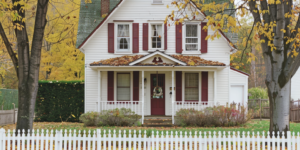4 Simple Ways to Get Rid of Pests in Your House

Pests can be a nuisance in and around the home. They can create a mess, spread diseases, and cost homeowners a fortune in damages. There are many different types of pests, but the most common are insects. Some of the most common insects that can cause trouble in and around the home are ants, spiders, millipedes, and mosquitoes.
1- Chemical Methods
There are a variety of pesticides available on the market, and it can be difficult to determine which ones are the best. In general, though, the best pesticides are those that are effective against the target pests, have low toxicity to humans and animals, and break down quickly in the environment.
Insecticides are among the most popular types of pesticides. They work by killing or repelling insects. Some common insecticides include pyrethroids, organophosphates, and neonicotinoids. Pyrethroids are synthetic chemicals that mimic natural pyrethrins, which are compounds found in certain flowers. Organophosphates are chemicals that attack the nervous system of insects. Neonicotinoids are a type of insecticide that is similar to nicotine.
Herbicides are another type of pesticide that is commonly used in agriculture and horticulture. You can consult with a pest control company for the best chemical methods to control pests in your home.
2- Non-Chemical Methods
There are many different methods of pest control that don’t involve the use of chemicals. One popular method is trapping the pests. There are a variety of traps available, from simple mouse traps to elaborate contraptions for catching larger animals like raccoons. Another common approach is to create barriers that pests can’t cross. Physical barriers like fences or metal screening can keep animals out of gardens or yards. Chemical barriers, such as insecticide-treated plants or baited traps, can also be used to deter pests.
Another non-chemical way to control pests is to use their natural predators. For example, ladybugs can be released into gardens to prey on aphids, and bats can be used to control mosquitoes in outdoor spaces. Finally, some simple tips for pest control inside the home include keeping food clean and sealed and removing moisture sources like leaks and standing water.
3- Inspect and Repair
One is to regularly inspect your home for any cracks or holes that may provide pests with entry. If you find any, make sure to seal them up as best as possible. Another key step is to keep your home clean and free of clutter, as pests often thrive in areas that are cluttered and dirty. Be sure to sweep and mop regularly, and take out the trash often. You can also install a pest control system in your home, which will help keep pests at bay. If you already have a pest problem, there are many things you can do to get rid of them. Contact a pest control company for assistance, or try some DIY methods such as using pesticides or traps.
4- All Natural Substances
There are many ways to control pests naturally, without using harsh chemicals. One way is to use plants and herbs that have been shown to be effective in repelling or killing pests. For example, mint repels ants, spiders, and mice, while lavender repels mosquitoes. Other plants that can be used for pest control include citronella, catnip, and peppermint. These plants can be used either indoors or outdoors.
There are a few simple ways to get rid of pesky critters for good. Whether you use traps, poison, or exclusion methods, these solutions will help keep your home and yard pest-free. Keep in mind that some of these solutions may require time and effort, but they are worth it in the end. So don’t wait any longer – get started on getting rid of those pests today!







